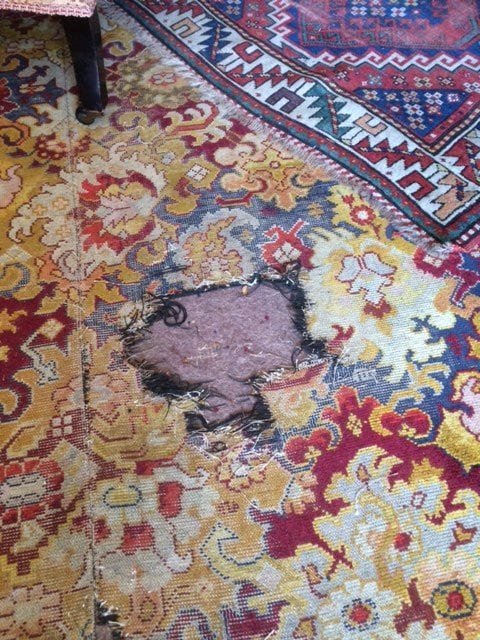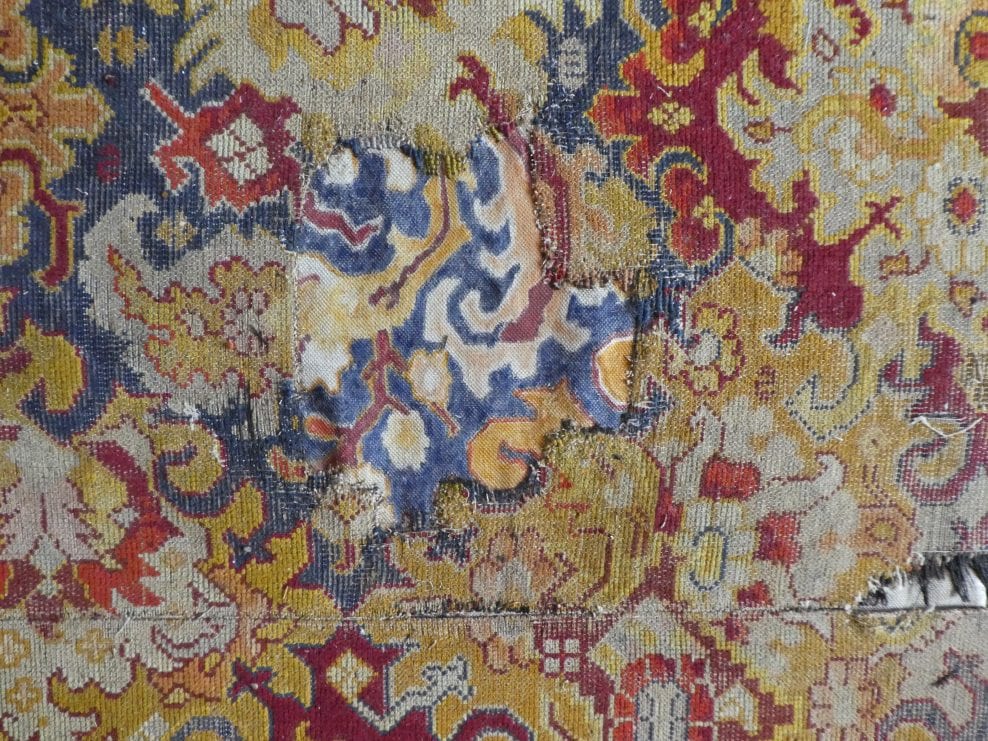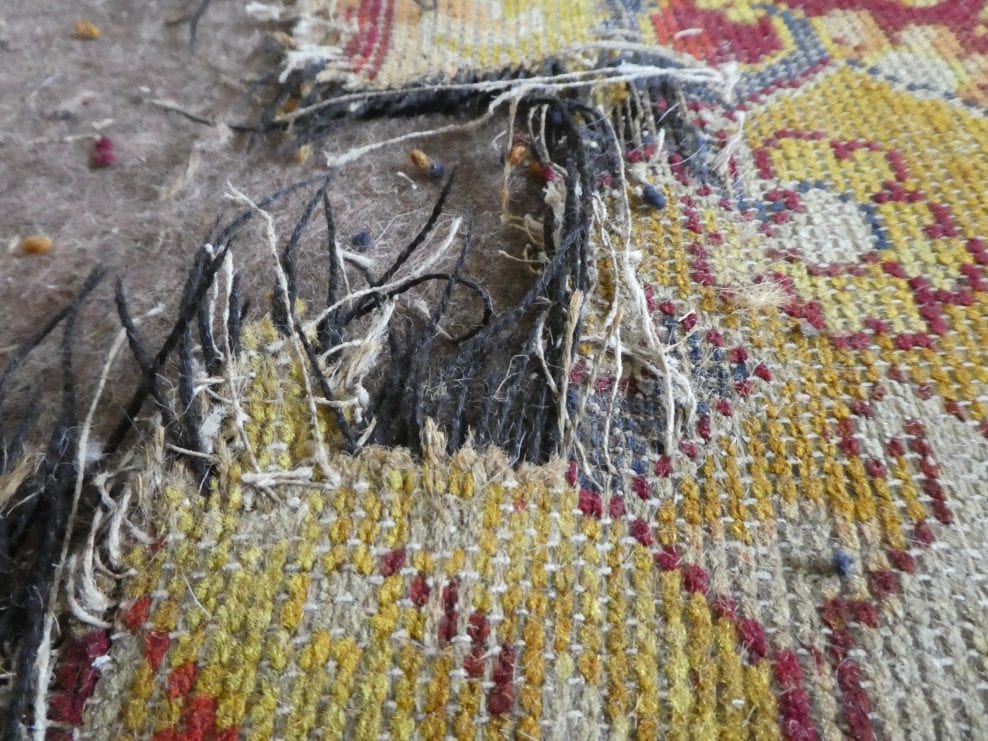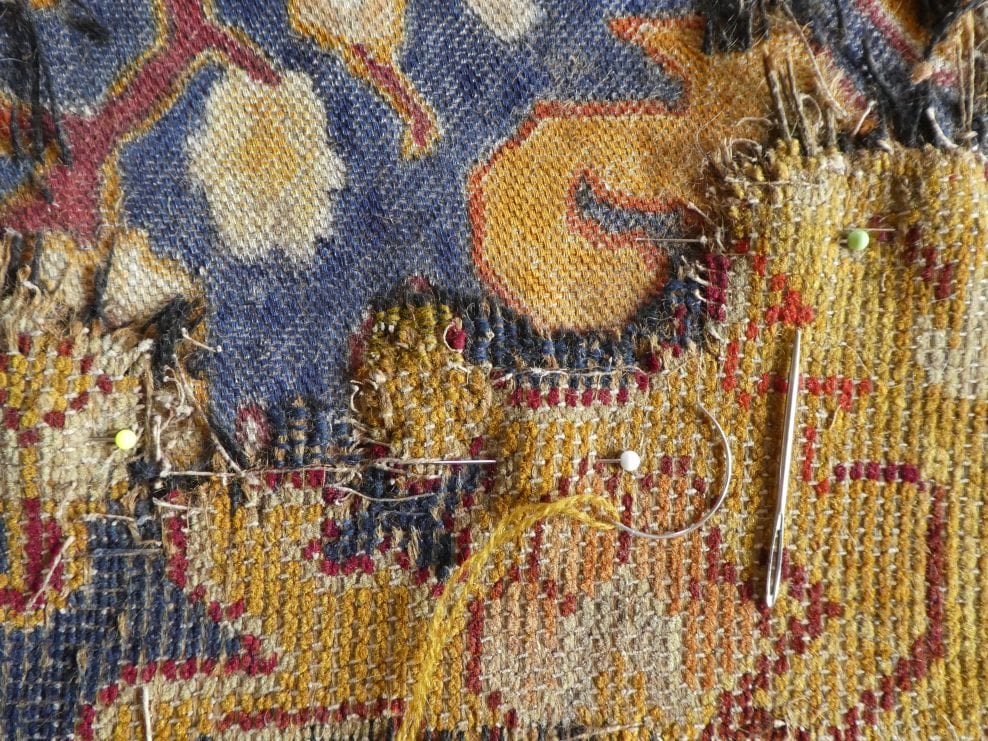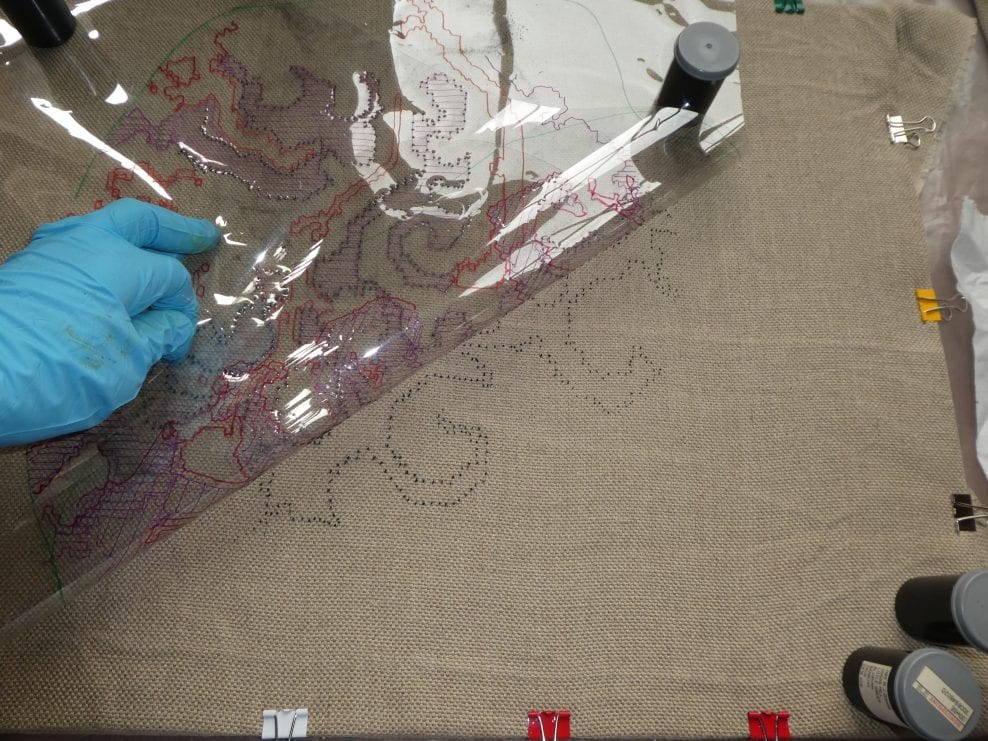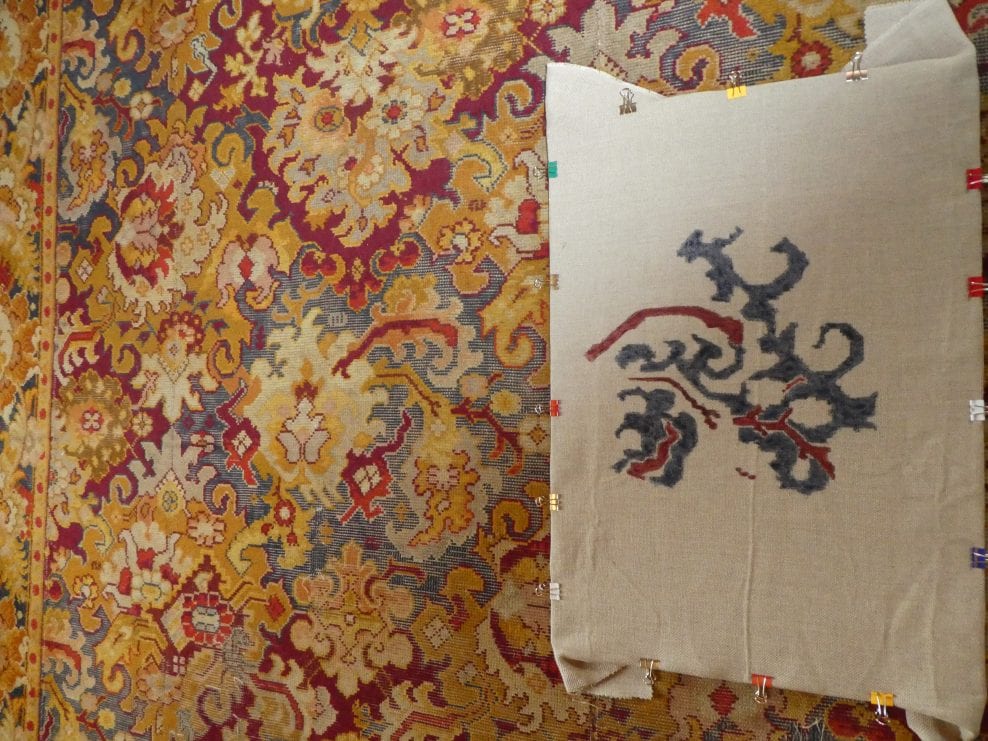Projects
Study Carpet, Historic House
Repairing a Study carpet with painted in-fills.
The carpet was too large (5.32 x 4.93 m), too difficult and structurally too unsound to remove, so we were obliged to work in-situ, stitching with a curved needle lying on the floor – for over two weeks. We don’t often face such a challenge. The Victorian/Edwardian seamed floor covering was of traditional design, however the looped and cut pile was machine-made, sandwiched in place by a tightly woven structure of bast/linen and possibly woollen threads.
To make the carpet look more structurally complete a decision was taken to in-fill the holes (some large) using the traditional transfer technique of ‘prick and pounce’, transferring most of the missing design elements onto canvas, rather than using a plain coloured patch. The canvas was pre-selected for its weight and weave structure and we ensured that the fabric paints chosen were of good ‘rub-ability’ and light fastness. Conservation stitching techniques were robustly executed with a curved needle and any loose threads were threaded to the back out of harm’s way.
